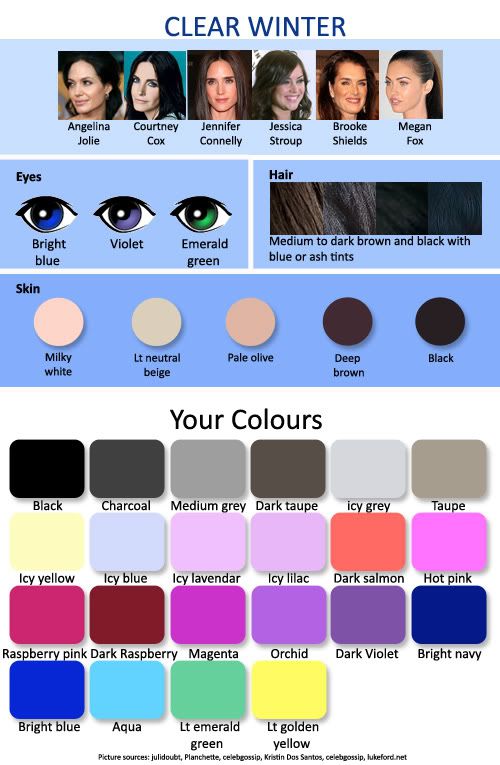More recently, Stacey asked if I could share some advice on how to dress for your particular skin tone -- a really great question. Wearing colors that complement your hair, eye, and skin color will make or break an outfit. You'll look much more put together if you stick to the colors that enhance your natural features.
So I did a little research and found that "color seasons" are broken down into three basic categories per season:
- Clear Winter, Cool Winter, Deep Winter
- Light Spring, Warm Spring, Clear Spring
- Light Summer, Cool Summer, Soft Summer
- Soft Autumn, Warm Autumn, Deep Autumn
So for example, I confirmed that I'm a Clear Winter (something my mother and grandmother have been telling me my whole life):
What's cool about finding out what colors will work best for you is that it explains why you can wear certain shades of colors, but not others. For example, if I tried to wear a light sage or mossy green, it would wash me out. But I can go for a kelly or an emerald green, which would complement my dark hair and lighter skin tone.
Of course, this isn't the be-all and end-all. You might find that you span a couple of different categories, or even that you like the way a certain color looks on you even though it's not in your recommended colors. (Like for me, I never wear as much purple as this chart recommends because I don't like it all that much. But I do wear red, which isn't on there.) The colors listed are a guideline. There are numerous similar shades within each of those colors that might work just as well for you. Use this as a tool to get in the right neighborhood, and experiment from there.


No comments:
Post a Comment